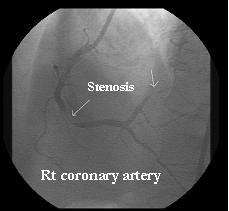March 14, 2015 - Thirty percent of patients with obstructive coronary artery disease (CAD) had inappropriate indications, in a recent study evaluating appropriate use criteria (AUC) for diagnostic catheterization. Overall, a substantial proportion of patients with inappropriate or uncertain indications had important coronary disease.
The study was designed to validate the 2012 AUC for diagnostic catheterization by examining the relationship between the appropriateness of cardiac catheterization in patients with suspected stable ischemic heart disease (IHD) and the proportion of patients with obstructive CAD and subsequent revascularization.

Image source: The Heart of the Matter. (http://hmatter.blogspot.com/2006/02/heart-tests-coronary-angio_114071728792428972.html.)
Researchers used The Cardiac Care Network, a registry of all paitents having elective angiography at 18 hospitals in Ontario, Canada, between October 1, 2008 and September 30, 2011. A final cohort of 48 336 patients showed 58.2% of angiographic studies were classified as appropriate, 10.8% were classified as inappropriate, and 31.0% were classified as uncertain. Overall, 45.5% of patients had obstructive CAD. In patients with appropriate indications for angiography, 52.9% had obstructive CAD, with 40.0% undergoing revascularization. In those with inappropriate indications, 30.9% had obstructive CAD and 18.9% underwent revascularization; in those with uncertain indications, 36.7% had obstructive CAD and 25.9% had revascularization. Although more patients with appropriate indications had obstructive CAD and underwent revascularization (P < 0.001), a substantial proportion of those with inappropriate or uncertain indications had important coronary disease.
The researchers concluded that their study raised concerns about the ability of the AUC to guide clinical decision making.




